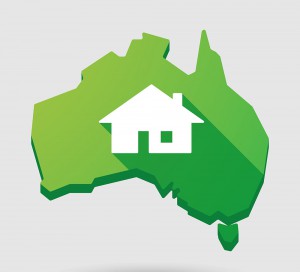Owning your own four bedroom house on a decent block of land with a big backyard and outdoor swimming pool used to be the quintessential ‘Great Australian Dream’.
But with rising property prices and increased living costs, that dream is being redefined.
In a recent Real Estate Talk show social researcher Mark McCrindle helps us understand the profile of the typical Australian property owner or property buyer.
HERE’S A TRANSCRIPT OF THE INTERVIEW:
(Alternatively you can listen to the short podcast at the top)
Transcript:
Kevin: How are we defining Australians now, or young Australian?
Mark: Well, there are a fair few challenges facing that next generation personally.
And it’s a great thing.
They’re more educated.
They’re staying at university longer.
They completing more education.
The only downside of that is that it does mean they’re not starting their financial life until later than their parents did, and they’re starting their financial life with a study debt to pay off, which their parents didn’t have.
Kevin: Yes, that’s true.
Mark: So in a sense, they’re further behind the economic eight-ball, if you like, than their parents were at the same age.
Then, of course, it comes to buying the home, and we all know the property prices and the challenge there.
People say property prices are up but wages are up, too, and that’s true, but not at the same rate.
If you look at average wages compared to house prices, that ratio continues to rise.
Now, nationally the average house price is ten times average full-time annual earnings, whereas four decades ago, it was about five times average earnings.
So that’s the challenge facing young people today.
Kevin: What is the average earning in Australia?
Mark: If you look at what they call the average, it’s $78,000 per annum.
That’s the average adult full-time earnings.
The only problem with that is it’s a bit overstated, because that’s average.
They take everyone’s earnings, divide it up by all workers.
The midpoint is quite a bit below that, because if you have a lot of big income earners and you average it out, it’s going to bump it up a bit higher than it is.
The median – the middle point in the earnings – is more like the $58,000 mark.
It’s a bit under the $78,000, but that’s roughly where it plays out.
You’d almost say around the $60,000 mark if someone’s working full time; that’s the midpoint.
Kevin: What about retirement age?
Is that likely to extend out a bit?
Mark: Certainly, that’s the policy.
For a male it’s been 65 ever since the Commonwealth Age Pension Act was passed more than a century ago, but we now have legislation that is going to push it to 67.
That’s just a start, it’ll continue to push back.
That’s access to the pension.
It won’t kick in for a little while before we get to 67.
But the reality is that people recognize they’re not only living longer, with longer in retirement to fund, but they’re younger longer.
They’re a bit more active later in life.
People won’t want to retire in those early to mid-60s, will certainly downshift from a full-time role, but we’re already seeing it, that they’ll work a little bit later, keep a foot in the work life, if you like, until probably well through their 60s.
Kevin: Whether or not we trade off those backyards for balconies and look at living in apartments closer to the city, or we, in fact, really harness the energy of the Internet and move to some of the more regional areas where property is affordable.
But quite apart from affordability, what else are Aussies looking for in their houses?
Mark: Well, Australians are very attached to, still, that dream of owning their own place.
It’s quite strong.
It’s quite different to what you see in Europe where people are happy to be lifelong renters and there’s more of a culture of that.
In Australia, people want some ownership, even this next generation coming through.
And, yes, it’s harder and it can’t happen on one income now; it requires two.
Often mum and dad have to help those young adult children get started.
But nonetheless, they want a starter place and own it.
It might not be that block of land and a house.
Increasingly, it is going to be that unit, it is going to be the apartment.
That’s in our largest cities.
The majority of all new housing approvals are in the unit and apartment category compared to the detached home category.
But, we still want to own, which is a great thing, because we know historically that home ownership has been the bedrock of building an asset, building net worth in Australia and continues to this day to be the case.
But we’re seeing changes, as well.
We’re seeing people get a home a little later in life.
We’re seeing, as you said, people move to the regions, and the growth of the regional areas is quite phenomenal.
In Queensland, Toowoomba and the growth there, and, obviously, the cities right up the coast continue to grow.
We have the growth of not just the coastal cities around Australia but the inland regional areas – the Ballarats and Bendigos, the Albury-Wodongas, the Wagga Waggas, and the like.
So that’s been a bit of a trend – the resurgence of regional Australia.
Not only because of affordability, but the access to the Internet people can work or run a business from wherever they are.
Kevin: The point there about lifetime renters.
There’s nothing wrong with that, and in fact, there’ll be a lot of investors who’ll be saying, “Well, that’s great.
We like to see people become renters because we need someone to be able to rent our properties.”
Mark: That’s right.
To get a bit more stability in renting is important for not only the renter; it’s great for the landlord and, of course, it’s great for the community as well.
In Australia, the average renter – we know this from the census data– stays 1.8 years per home.
That is a lot of churn, particularly if people are renting for a long period of time.
That means they’re moving to a lot of homes, which means you don’t get a sense of belonging and connection.
You keep moving to new shops and new community organizations.
It’s hard to build community when you’re staying less than two years on average, and a lot of people – to make that the average – are staying a lot less than that.
If we can develop a culture where it’s a little bit more set up for people to stay longer and they’re encouraged by their landlords to do so, that’s going to be better for all concerned.
But the reason that it is so low is that people don’t so much care because they’re staying in the rental period of life until they save up for the deposit for the mortgage for the home ownership.
So we still have that strong channel in Australia from renting until people can then move into owning.
Kevin: Final point, is wealth distribution.
We’re saying that the current generation probably not as wealthy, in fairness, but they are going to inherit a fair bit of wealth, aren’t they?
Mark: They are.
If we look at the parents of today’s young adults – so the parents of the mid-20-somethings – they are the younger baby boomers, in their 50s through into their 60s, and they have the highest net worth in Australia.
A 55-to-64-year-old household has a net wealth of $1.2 million.
It’s the highest that it’s ever been.
And that’s the average net wealth.
You have a lot of households, obviously, above that; some, of course, below that.
But $1.2 million, now most of that or certainly much of that is tied up in the family home, a lot more in superannuation.
So that’s where it is.
But nonetheless, that’s a pretty good foundation for retirement, and it does allow a little bit of money there, some potential liquidity if they downsize to help their children out, as well.
That’s what we’re starting to see.
And if they can do well – and keep in mind, the mid-50s to the mid-60s are still earning, they’re still wealth accumulating – if they can build that nest egg a bit further, within a few decades, a fair bit of that – if not most of it – will be passed on to the next generation, and it will represent the biggest inter-generational wealth transfer Australia has ever seen.
Probably about $3 trillion will be transferred in wealth between the generations over the next three decades.
Kevin: Mark, thanks for your time.
Mark: Thanks again, Kevin.
If you don’t already do so, please subscribe to Real Estate Talk by clicking here.
We’re not just a weekly podcast – we regularly update our site with audios, videos and articles from Australia’s leading property experts.





No comments:
Post a Comment